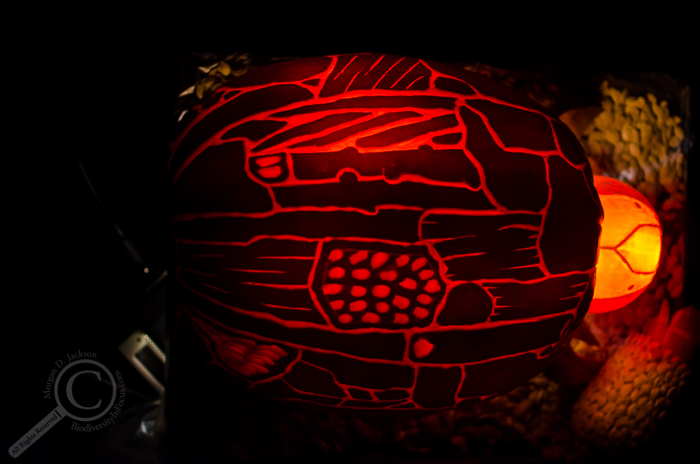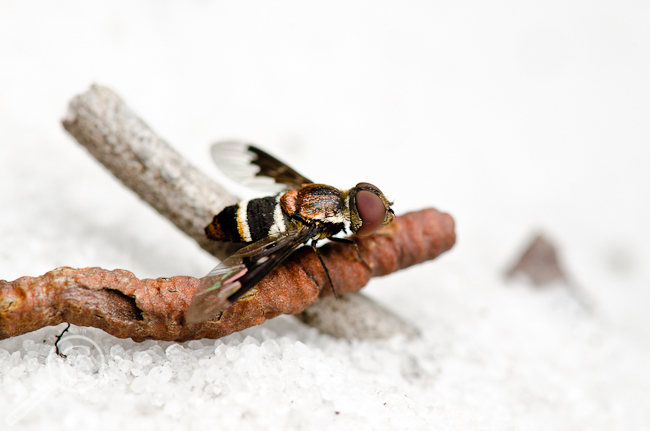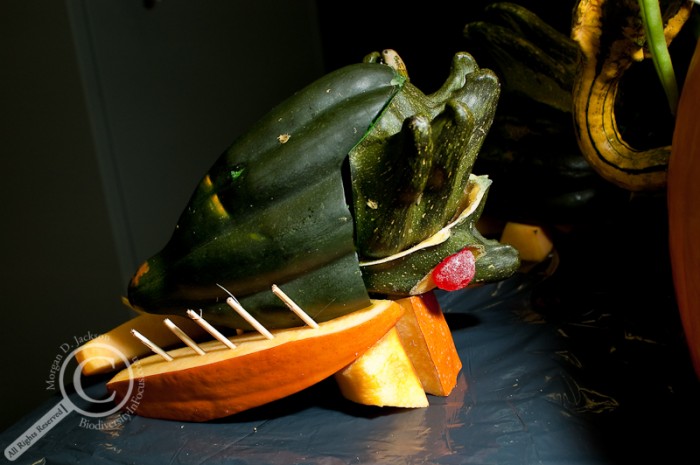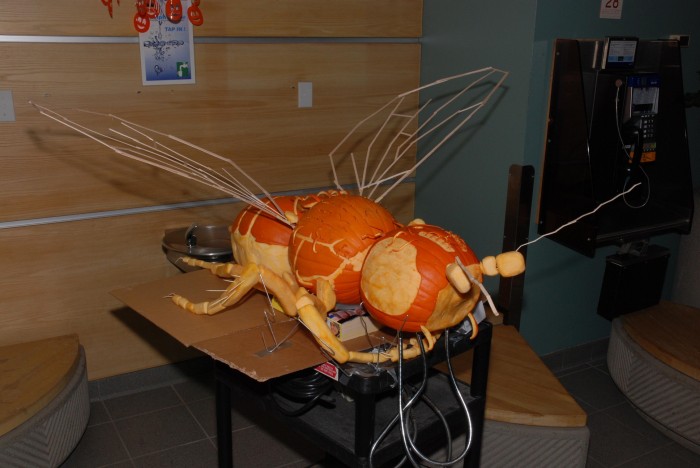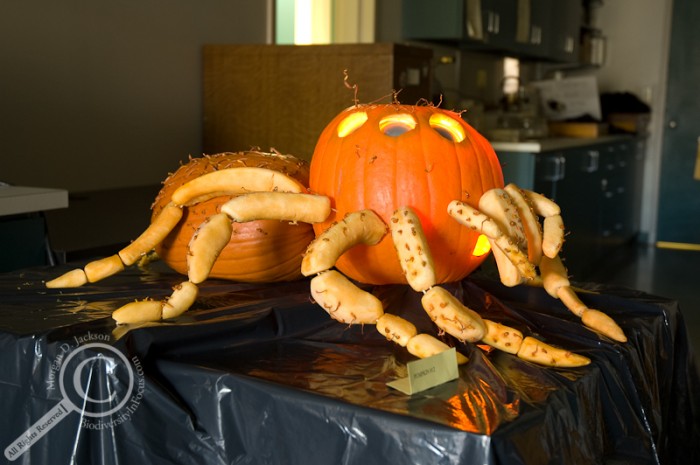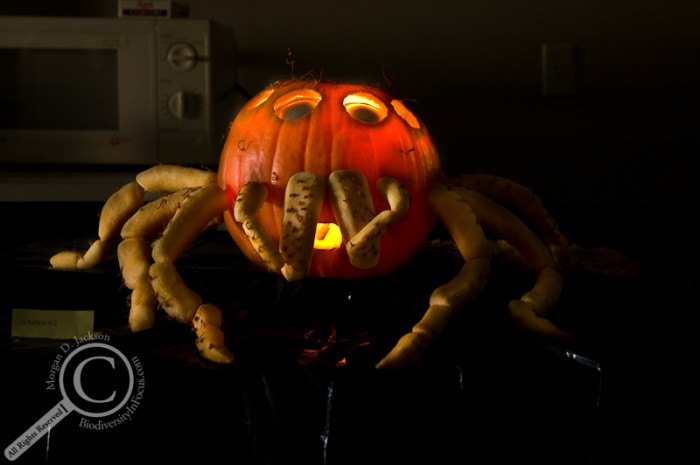It’s that time of year again, when spiders make their triumphant return to become decorations rather than despised, and when everything normally considered scary is fun, at least for one night: it’s Hallowe’en!
As in past years, the University of Guelph Insect Systematics Lab took to the pumpkin patch and came back with some new insects to be added to our glowing growing collection.
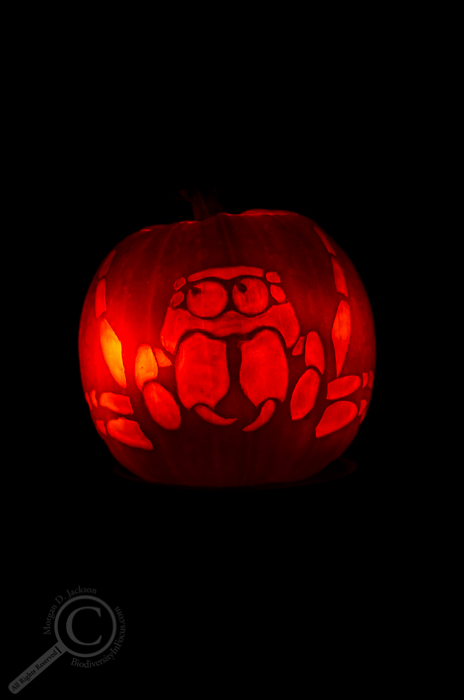
This jumping spider in full display mode is ready to take back the night. Design by Jonathan Wojcik, carved by Meredith Miller, Tiffany Yau, Steve Paiero, and myself.
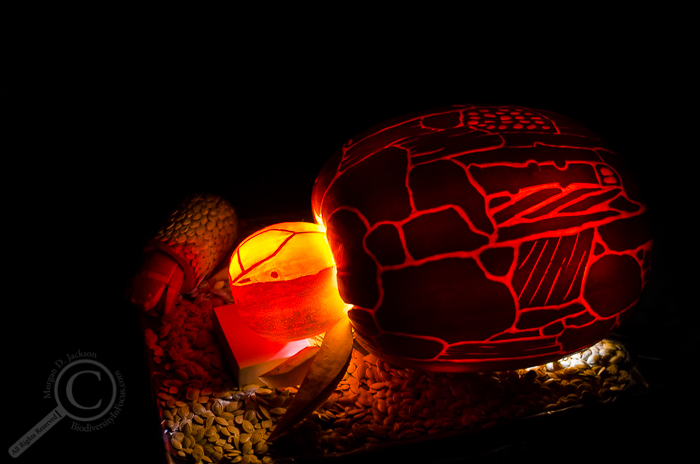
Trich(optera) or Treat! These larval caddisflies went all out with their costumes this year. Designed & carved by Meredith Miller, Steve Paiero, Tiffany & Jocelyn Yau, and myself.
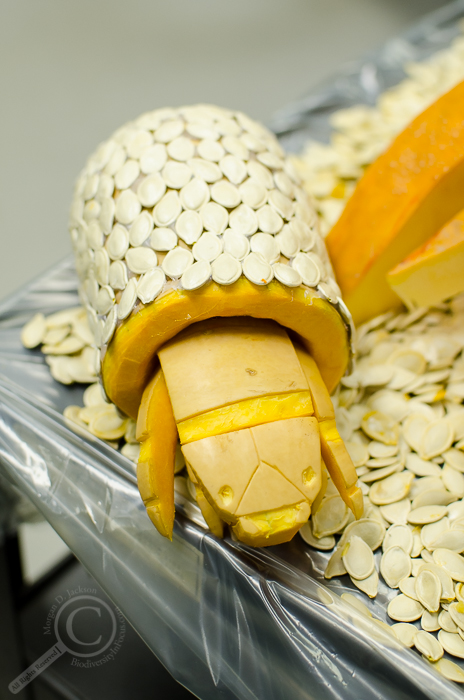
Caddisflies get hyped for Hallowe’en at an early instar, as this butternut squash creation by Meredith Miller clearly demonstrates!
If you & your friends or family created your own Ent-O-Lanterns this year, drop a link in the comments so we can all enjoy!
Happy Hallowe’en!
UPDATE:
Sally-Ann Spence (@minibeastmayhem) shared this fantastic scary-b beetle on Twitter
Left with the smallest pumpkin after all the kids bagging the big ones …it had to be done 😉 #DungBeetlesRule pic.twitter.com/3ovxwM2cwN
— Sally-Ann Spence (@minibeastmayhem) October 31, 2014

